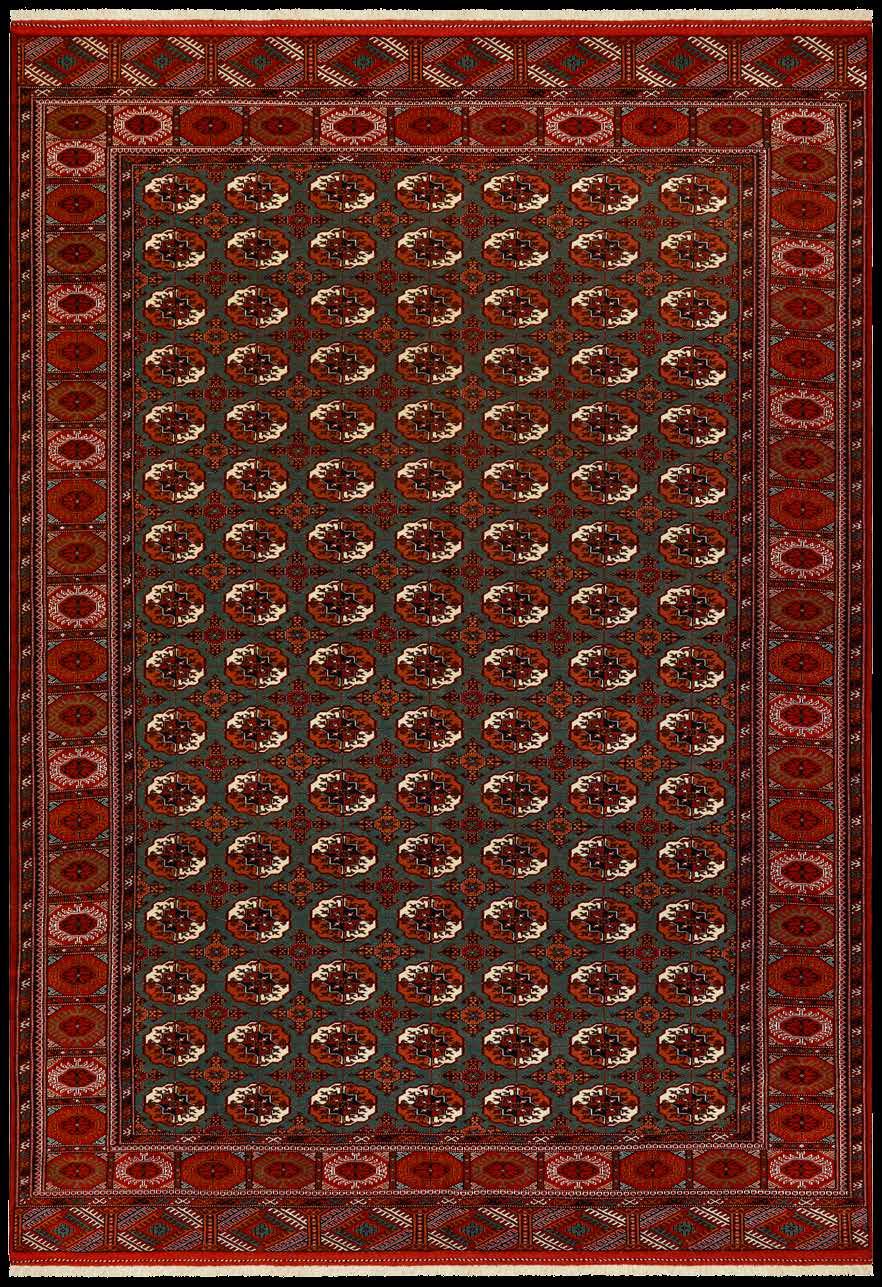
2 minute read
TURCOMANOS
O tapete turcomano é tradicionalmente originário da Ásia Central, produzido pelas tribos turcomanas, que são o principal grupo étnico no Turcomenistão e também são encontradas no Afeganistão e no Irã. Neste último, essas tribos vivem nas partes norte e nordeste do país e achados arqueológicos indicam que suas confecções de tapete se originaram por volta do século VI AC. Marco Polo, o famoso explorador italiano do século XIII, disse uma vez "Aqui eles fazem os tapetes mais requintados e bonitos do mundo", enquanto atravessava terras turcomanas.
Turkmen rug is traditionally originating in Central Asia, produced by the Turkmen tribes who are the main ethnic group in Turkmenistan and are also found in Afghanistan and Iran. In the latter, these tribes live in the north and north-east parts of the country and archaeological findings point that their rug production dates back to the 6th century BC. Marco Polo, the famous 13th century Italian explorer, once said "Here they make the most exquisite and beautiful rugs in the world", while crossing Turkmen lands.
Cuidados:
Móveis pesados colocados sobre o tapete por muito tempo podem causar marcas perceptíveis na sua superfície. Se a marca for reconhecida imediatamente, ela pode ser removida com o uso de uma escova de dente; a área marcada deve ser escovada na direção oposta das pilhas deformadas até que voltem à sua forma padrão. Em casos mais graves, as reentrâncias podem ser corrigidas colocando cubos de gelo sobre elas; durante o processo de fusão do gelo, as pilhas deformadas absorvem a água e sobem gradativamente até sua forma padrão.
Care:
Heavy furniture placed on the rug for a long time can cause noticeable marks on the surface. If the mark is immediately recognizable, it can be removed using a toothbrush; the marked area should be brushed in the opposite direction of the deformed piles until they return to their standard form.
In more severe cases, the indentations can be corrected by placing ice cubes over them; during the ice melting process, the deformed piles absorb water and gradually rise to their standard form.
Aparência: Todos esses tapetes possuem padrões geométricos. O repetido motivo "Gul" é a principal indicação de tapetes turcomanos.
Qualidade: Sua qualidade varia. Os tapetes mais antigos (pré-1945) são muito bons, mas alguns dos tapetes mais novos têm KPSIs mais baixos e são tingidos com corantes químicos em vez de corantes vegetais.
Tamanho: Estes tapetes podem ser encontrados em diferentes tamanhos, mas a sua maioria é de tamanho pequeno.
Cor: Vermelho escuro é a cor dominante. Planos de fundo azuis são muito raros.
Textura: Lã macia; pilha fina e apertada.
Fundação: A urdidura é principalmente de algodão; a trama é de lã.
Nós: os tecelões turcomanos utilizam nós turcos. O número de nós pode variar, mas a sua média gira em torno de 120 KPSI (nó por polegada quadrada).
Appearance: All of these rugs have geometric patterns. The repeated "Gul" motif is the main indication of Turkmen rugs.
Quality: Their quality varies. Older rugs (pre-1945) are very good, but some of the newer rugs have lower KPSIs and are dyed with chemical rather than vegetable dye.
Size: These rugs may be found in different sizes, but the majority are small.
Color: Dark red is the dominant color. Blue backgrounds are very rare.
Texture: Soft wool; thin, tight pile.
Foundation: Warps is mostly cotton; weft is wool.
Knots: Turkmen weavers use Turkish knots. The number of knots may vary, but averages around 120 KPSI (knot per square inch).






